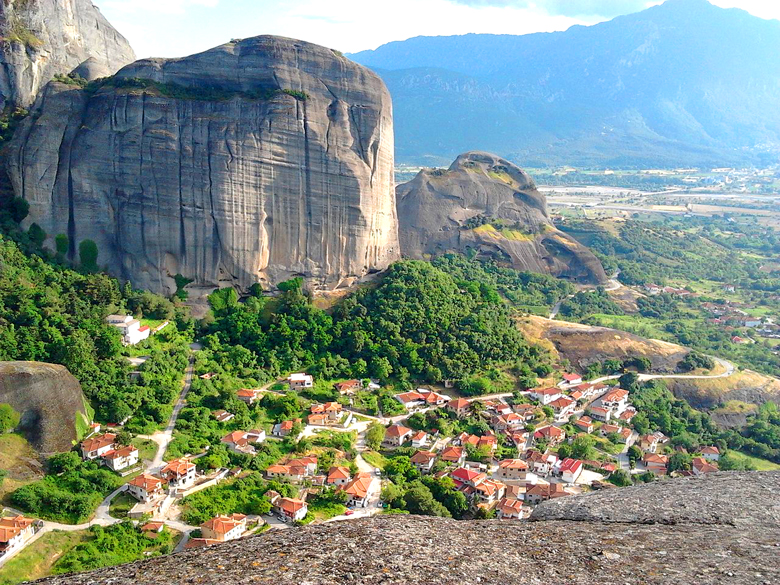Kastráki is a picturesque village in Trikala Region, Thessaly, Greece.
The settlement originated during the Ottoman rule, it was founded by people who came from the region of Epirus, who were forced to leave their homes during the reign of Ali Pasha, whose residence was in present-day Ioannina.
“Kastro” means “castle” – the name of the village comes from a Byzantine stronghold from the 11th century, whose ruins have not survived to this day.
From Kastrák it is about a kilometer to the nearest operating monastery in the area, St. Nicholas Monastery.
Today, the village has been declared together with the whole area of Meteora a Monument of Nature and World Cultural Heritage by UNESCO, while at the same time it has developed into a wonderful recreation place with campsites, taverns and hostels, which offer pleasant rest to visitors.
Access : Coordinates: 39.7, 21.616667 / Kastraki located in the Trikala prefecture and the Thessaly region, in the central part of the country, 330 km northwest of Athens, the capital. The nearest larger town is Kalampáka, 1.6 km southeast of Kastráki. / Kalambaka is 330 km away from Athens.
Arriving in Trikala, where the E65 ends, follow the signs carefully because you can get confused until you enter the Trikala – Kalampakas highway.
Highlights :
- The village, like Kalampáka, is known for being located right at the foot of the well-known rock formations of the Pindos Mountains in Meteora. The Meteora nature and monastery area is a UNESCO World Heritage Site.
- Church of St. Athanasios (Ágios Athanásios) date from the late 18th century. Mandilán Monastery of St. George (Moní Agíou Georgíou Mandilá) dates from the 14th century
- The murals of the Church of St. Nicholas (Ágios Nikólaos) and the Church of St. Athanasios (Ágios Athanásios) date from the late 18th century.
- One of the two roads going to the monasteries passes through the village.The village of Kastráki is a popular place to stay for tourists visiting Meteora, as well as a base for rock climbers.
- The Church of Panagía Doúpian, which is associated with the history of the monasteries of Meteora, dates back to the Byzantine period from the 11th century or the beginning of the 12th century.
- The Church of the Dormition of the Blessed Virgin Mary in Adrácht (Koimíseos tis Theotókou) is a three-nave basilica decorated in the 16th century.
- Do not miss the opportunity to visit the Museums of Digital Imaging & Geology. With free access for the public.
Activities : sightseeing / photo opportunities / Long distance walking / Scenic Driving- Auto Touring / landscape observation
Go next : The amazing huge rock formations of Meteora. / The village of Chrisomilia lies across the summit of Mount Koziakas located about 25 km far from Kalambaka,

